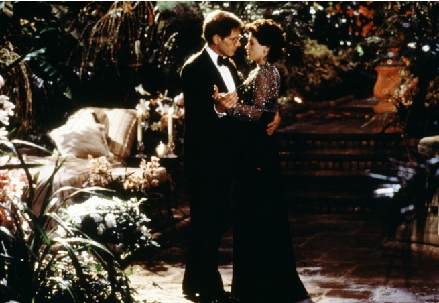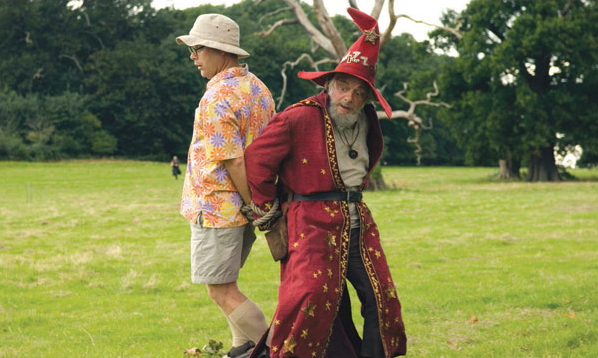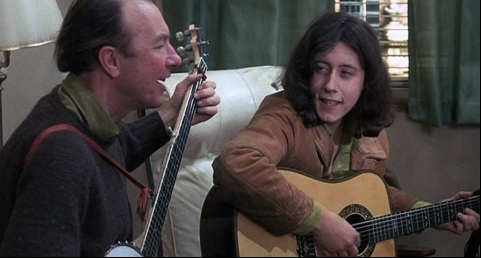There seem to be several different definitions for the term “feminist cinema,” (or TV, as the case may be). To some, unfortunately, it means films with self-proclaimed “bitches” who spend an hour-and-a-half man-bashing, complaining about cosmetics/shaving and other methods of hair removal/magazine imagery/children, being exceptionally liberal with the sharing of physical intimacy (often in a violent and loveless way, which is often interpreted as “taking control of their sexuality” by people with low self esteem), and ultimately either ending up alone or ‘asserting their womanhood’ by becoming lesbians. Consequently, a great many philosophically lost film theorists and media commentators have proclaimed the feminist icons of cinema and television to be such woefully auto-derogatory characters as those from Bound, Boys Don’t Cry, Alias, Xena: Warrior Princess, Roseanne, Buffy (the TV show), Gone With the Wind, Thelma and Louise, films starring (and/or made by) Bette Davis/Marlene Dietrich (some, not all)/Joan Crawford, Maya Deren, and for some reason the majority of newer movies involving racial minorities and/or homosexuality – as feminism has been co-opted to include every other group perceived to be underrepresented by the mass media (in women’s social/political organizations and women’s studies textbooks, at least). If these are to be seen as examples of film and television that promote more positive and/or genuine (honest) messages about the portrayal of women in the media, the implication of this assertion is far more harmful to the perception of the place of women in society than are the influences of many of the blatantly chauvinistic films the proponents of this idea condemn.
Despite the prevalence of this ‘common’ definition of feminist cinema and television, however, I use a different set of criteria to define what constitutes feminist media. Firstly, it must be understood that feminism is a social/political ideology – much like environmentalism, consumer protectionism, and several other well-known -isms. Because of this, I don’t believe that a film must be made by a female filmmaker, or revolve entirely around a female protagonist, in order to be a feminist film. It need only (subtly or not) incorporate the feminist mindset into its characters, story, etc. Secondly, although this is somewhat of a slippery slope, I believe the intention of the filmmaker(s) can be (but isn’t always) valid in categorizing a film as feminist cinema.
For a comparative example, let’s take a look at the two different versions of Buffy Somers from the movie and the TV show versions of Buffy the Vampire Slayer. The TV Buffy spends most of the program’s run oscillating between pining away for some unattainable guy and becoming increasingly emotionally/morally bankrupt as a result of losing her guy(s). She also spends much of her time trying to recapture the good ol’ days when she was ignorant, shallow (well, okay, that part didn’t really change much), and incapable of defending herself. Essentially, the base of her character is built upon a lack of both a sense of self/identity and, as a result, a false and easily shattered outer illusion of self confidence. As a brief yet relevant sidenote, the character of Willow is an even better example. After being given the short end of the stick repeatedly in relationships, she eventually just decides to give up on men altogether – only to become the equivalent of a bad boyfriend and get dumped anyway. Joss Whedon has repeatedly stated that his female characters, especially Buffy, were intended to portray strong female leads (to embody feminist ideals) – and that he greatly disapproves of the version of Buffy seen in the feature film. This is important to note because it illustrates his obliviousness to the state of cognitive dissonance in which he should find himself as a result of the fact that the portrayal of the female mindset adopted by TV-Buffy so heavily undermines feminism.
In contrast to this, the portrayal of the movie Buffy is both more complex and more indicative of the tenets of feminism. Arguably, the TV show picks up in a somewhat retroactively modified version of when the movie ends: Buffy has slain the local vampires and left the school in a bit of a shambles – then, moving away. There are, however, one or two key differences that shape the characters. TV Buffy got into trouble over a long period of time, causing her not-wealthy, not-oblivious parents to divorce. This left her with abandonment issues, especially in regard to men (as a Freudian thing relating to her dad leaving, I guess). This set up a big precedent for the show. At the end of the movie, she was dumped by her dopey boyfriend and Merrick had died in her arms, but she didn’t end up getting saved by a guy or doing anything too faux girl-powery (viz., 70s Wonder Woman). Also, her would-be boyfriend did help kill the monsters and she did accept him in the end, but not in a pitifully needy or soap operatic way. There; I finally did a post about Buffy.
Some other examples from cinema and television that I believe better exemplify the tenets of feminist media include certain female characters in Life Without Zoe (short film within New York Stories), Daria, A League of Their Own, Yentl, On a Clear Day You Can See Forever, Independence Day (for Vivica Fox’s role), Jumpin’ Jack Flash, The First Olympics: Athens 1896, I.Q (somewhat arguably), the Star Wars trilogy, Auntie Mame, Supercop, and the two primary “Bond girls” in Tomorrow Never Dies and For Your Eyes Only.
Now, if you want a real controversy, try to argue as to whether or not Miss Piggy is a feminist icon. That’ll make your head swim for a minute or two.





